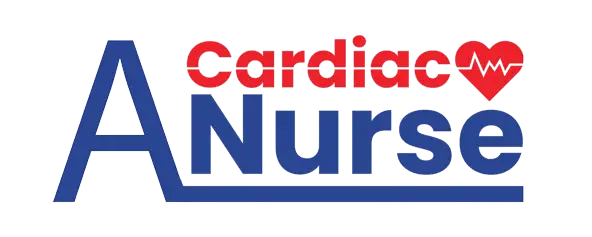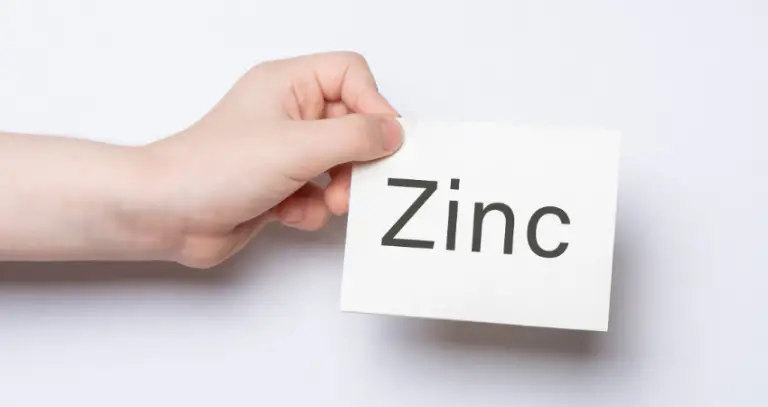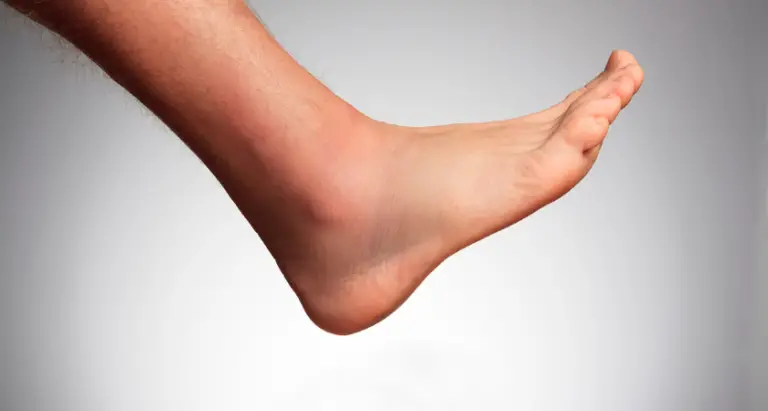What Are the Consequences of Thiamine Deficiency
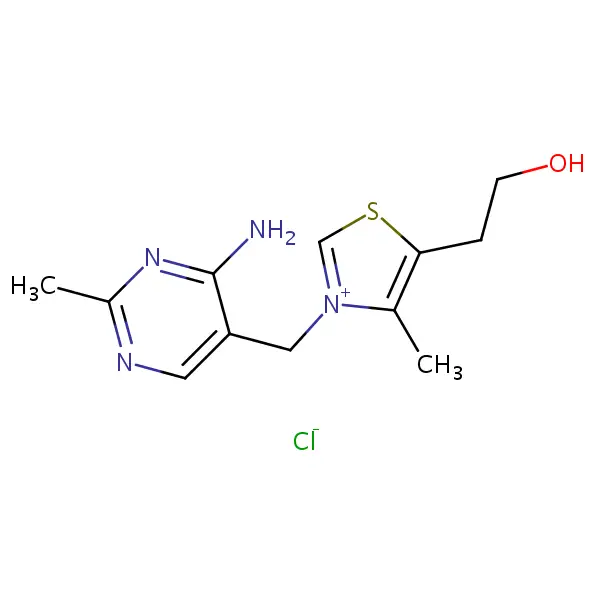
Phyllis Robinson MSN, RN is a Registered Nurse of 27 years. Phyllis is passionate about the prevention and healing of heart disease using traditional and alternative methods. She has experience in emergency room, telemetry, infusion, and critical care. Phyllis currently practices in an intensive care unit.
By: Jane Finn, RN
I am astonished and amazed at the role that B1 or thiamine plays in our health. Thiamine plays a big role in the functioning of our nervous system. Jane Finn, RN has been battling various “symptoms” for a while. This is her story of Thiamine deficiency.
By: Jane Finn, RN
After decades of declining health caused by a longstanding thiamine deficiency that was ignored by dozens of physicians, I fought my way back to health. In an effort to learn more about why I developed thiamine deficiency, I sought help from a doctor who specialized in functional medicine.
Unlike many of the conventionally trained physicians, he listened to my story and reviewed my entire health history. He then ordered a number of tests, among them something called Calcium EDTA chelation. This involved a 30-minute infusion of calcium ethylenediaminetetraacetic acid, a synthetic compound that is thought to bind and remove heavy metals. After the IV, urine was collected for 6 hours to be analyzed for heavy metal toxicities and other properties.
Among the known risks of EDTA chelation protocols, is kidney damage, and in severe cases, kidney failure. I did not know this going in and it seems that neither the physician nor his assistant recognized that, in my current state, I was at risk for nephrotoxicity.
Over the next few days, it became glaringly obvious that this was the path I was headed down. I developed severe edema and my blood pressure skyrocketed. Unfortunately, it took multiple hospitalizations over the course of several weeks for the physicians to recognize this.
To boot, during the first two hospitalizations, I was prescribed drugs and given tests that would not only exacerbate my longstanding thiamine deficiency but damage my kidneys further. It was not until the third hospitalization, where physicians recognized that I was indeed in kidney failure, stage 5, with a glomerular filtration rate (GFR) of 9, and because of my vocal insistence, reluctantly added IV thiamine to the protocol. Oral niacin was also added in an effort to control my ever-increasing blood pressure.
Even with the IV nutrients and medications prescribed, recovery was difficult. I was severely edematous and had very little urine flow. In fact, I was told by the physicians that I would not likely recover my kidney function and that I may need dialysis.
I persisted, and upon release, refused the diuretics and prednisone that were prescribed, knowing that they would make my recovery impossible. Instead, I took thiamine, and other nutrients and let my body heal itself. Gradually the swelling decreased. I lost 30lbs over the next 10 days, urinating every 30 minutes at times.
My blood pressure decreased as well, and as it did, I titrated down the blood pressure meds. Now, four weeks later, everything is just about back to normal. At my latest appointment with the nephrologist, he admitted surprise to my improvement.
While there is much more to this story, see below, the gist is that EDTA chelation is nephrotoxic to some people. Perhaps those who struggle with thiamine deficiency are at an especially high risk. I do not know. What I do know is that one has to be vigilant about one’s health.
Related Articles
Magnesium glycinate for heart palpitations
The Cascade of Events Leading to Kidney Failure
In August of this year, my 80 year-old aunt, whom I was caring for, became ill with what I presume was COVID.
After nursing her back to health, I too became ill, though only mildly so, and although I technically recovered, it felt as though I wasn’t yet back to where I was pre-COVID.
I started spilling protein in my urine (proteinuria) and my symptoms of thiamine deficiency seemed to be coming back: fatigue, irritability; insomnia; lower back pain; blood pressure ups and downs; temperature issues; nerve and muscle pain; kidney/bladder issues: urinary frequency, urgency, leaking, leg and back pain, nausea; balance and gait disturbances; anxiety and sadness. These are also common issues seen in post-COVID sufferers.
I knew that viruses deplete thiamine, which then off sets many other essential nutrients, so I upped my supplements.
I was Still not feeling well at the end of August, I sought help with a functional medicine doctor once my viral symptoms passed and after quarantining for several weeks. I was seeking “root cause” answers that Western Medicine doctors didn’t have time to search for.
This kind-hearted, functional medicine doctor ordered a lot of testing after doing a thorough history. He actually reviewed each of my previous physician reports, the copies of my lab work, and multiple testing results. He saw my proteinuria results in my early August lab work.
I explained I had been sick with a virus after caring for my Aunt, suspecting COVID, and that it may have attacked my kidneys mildly. According to the research, this virus had mutated and may attack any organ system, not only the lungs as earlier thought.
In addition to other tests, he ordered a heavy metal chelation protocol called Calcium EDTA. This was on August 26, 2020. I did not do my research on this protocol, perhaps because I was so grateful that this physician listened to me.
That was a mistake. EDTA chelation therapies should never be given to someone with kidney problems, and certainly not to someone who struggles with thiamine. A well-documented, although seemingly ignored effect of calcium EDTA is kidney damage leading to kidney failure. EDTA is nephrotoxic. This procedure put me into kidney failure, upon which the hospital physicians nearly killed me with their treatments.
Burgeoning Kidney Failure and My First ER Visit
A few days after the chelating test, I began having more and more back pain, urinary frequency, urgency, fatigue, and gained more and more weight the following weeks, in the form of edema. My blood pressure climbed higher and higher.
My legs became so swollen I could barely walk or bend them. The pitting edema was 1-2+ to my groin and worsening as I was growing more edematous all over.
I suspected it was from the chelation and called the functional medicine doctor’s office asking what I was given; researched, learning “calcium EDTA” can be nephrotoxic (causing kidney injury).
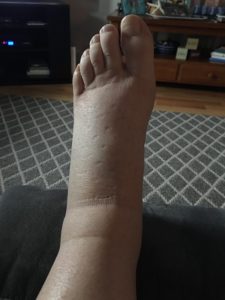
Their office said that they “had never experienced this with anyone.” After researching it, I was very scared and angry at myself for not fully understanding the test or asking questions. I was angry for not being fully informed. I never would have agreed to this test had I known of this kidney damage risk.
I presented to the emergency room (ER) on September 3, 2020 with headache, low back pain, high blood pressure and marked pitting edema.
My daughter explained to my admitting nurses and doctors about my presumed COVID virus and mild proteinuria in early August, compounded by the chelating testing, and my long history of thiamine deficiency underlying this mess.
I could barely speak. I was so weak and in great pain. From researching, I knew my thiamine was tanking again due to this virus, stress, illness, and the meds they had prescribed (Lasix, is especially problematic for thiamine).
I am an experienced RN and knew I was seriously ill but once again, getting others to hear me would prove nearly impossible until I was near death. I’m glad I video-documented and photographed my sickest days and nights. Looking back on them is so frightening.
Although my kidney function labs were abnormal, and I was very symptomatic with kidney disease, I was sent home and told to follow up with my PCP. I reported my ER visit.
Symptoms Dismissed and Nephrotoxic Drugs Prescribed –Second ER Visit
I grew sicker, BP rising higher, headaches and edema worsening, presenting back to ER a second time. I was admitted for three days with worsening kidney functioning. I was barely urinating, monitoring my own intake and output (that basic, good nursing care should have been done through each hospitalization).
I was given three antihypertensive medications, (two oral, one rescue IV for continued hypertension when the two oral ones didn’t work). I had severe reactions to IV hydralazine, a vasodilator antihypertensive medication that is also a nephrotoxin.
I tried to tolerate it, trusting my caregivers knew what was best. I stupidly accepted it, trying to be a compliant patient. I did this three times before finally refusing it.
The hospitalist cautioned me “not to list it as an allergy because one day you may be dying needing it, and if listed as an allergy you won’t get it,” he scolded me!
I was sent home three days after my second admission, after being told -“you’re not as sick as you think you are,” by the same very handsome charismatic discharging hospitalist.”
At that point, frustrated and disgusted at not being heard, I sadly thought “GET ME OUT OF HERE,” and I was discharged home.
Back Home Again With Failing Kidneys
Monitoring my own urine output, vital signs, and journaling my symptoms I desperately tried caring for myself at home alone. My daughter called and visited me often. She tried setting up a nephrology appointment but was told end of November.
She contacted the on call nephrologist, who told her to “increase my antihypertensive meds.”
“What meds,” she asked.
I had been discharged without prescriptions after getting Losartan and Lasix for two days in the hospital which were barely effective. Note that Lasix induces thiamine deficiency, a problem I have been dealing with for years now. This was ignored.
The nephrologist called in an order and was infuriated that his recommendations were not followed upon discharge. This was on a Wednesday, and after following his protocol, my condition grew worse bringing me back in to the ER for a third time. On September 13, I was admitted for a week.
Fulminant Kidney Failure and Third ER Visit
By this time, I was in stage 5 kidney failure with a GFR of 9, which in most cases indicated kidney dialysis. I was never more scared for my life.
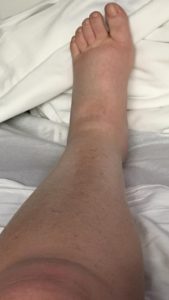
I was still not heard. Again, I tried retelling my history of presumed COVID, receiving calcium EDTA chelation, and my long standing thiamine deficiency. ER routine COVID testing was negative, as I suspected it would be at this point.
On this third hospital visit, the nephrologist encouraging me to go back to the ER, was concerned I may have a renal thrombosis (blood clot) and ordered a cat scan without dye first; then with a “renal dye dose,” to fully rule out need for a heparin drip and ICU care. The dye used in these scans is also nephrotoxic.
The kind and caring ER doc, empathetically explained the need for a CAT scan with dye after doing one without dye, after discussing with my nephrologist. He then had multiple computer issues ordering it, so I was more anxious and fought the fatigue to stay awake to be sure I was given this “lower 80mg cat scan dye dose.”
The radiologist was fully prepared with dye injection preset for me upon arrival.
I questioned the dose and was cockily told by the radiologist: “there’s only one dose…”
I adamantly refused, stopping him, telling him to call the ER doc who had spoken to my nephrologist regarding the “renal dose.” Thankfully, my daughter’s friend Julie, who worked at the hospital was kind enough to accompany me. She spoke up for me too. Fifteen minutes later, the radiologist came back telling me he had a lower dose of the dye.
The following day, I was questioned over and over as to getting the dye.
The nephrologist asked “Did you get the dye”? YES, I told him.
“Are you SURE you saw the radiologist inject the dye”?
Yes, I ascertained, growing more anxious as my kidneys were failing more each day. On 9/17, my GFR was 9 indicating stage 5 kidney failure and I thought I would need dialysis or DIE.
Every doctor seeing me touted a different plan. Nephrologist treat this condition with prednisone and diuretics usually, I was repeatedly told.
In my state, knowing I was already hurting from a virus, then chelation, and now compounded by Cat Scan Dye (which all deplete thiamine, I refused steroids and diuretics (which can also be toxic to kidneys).
My gut instinct, which I have learned many times is usually right, was telling me I would certainly die if they added prednisone and diuretics.
I felt these meds would fully kill my kidneys, and further elevate my dangerously high blood pressure. Most of us are aware of how steroids can increase swelling too, yet these were the only options I was given. I begged for more time allowing my body to heal.
I pleaded for IV thiamine protocol with the “banana bag cocktail of multivitamins and B vitamins.” I had to accept the “alcoholic protocol” of thiamine 500mg IV with Niacin 500mg by mouth, even though I never was an alcoholic, but that’s all most Western Doctors know about Beriberi Disease.
Two days later the hospitalist wanted to change thiamine HCL to 100mg every 24 hours. I begged to continue at 200mg IV every 8 hrs. He agreed, and added an oral multivitamin only upon my request.
They didn’t understand the need for thiamine’s co-factors. I was hoping at least this thiamine IV therapy would be some help.
Fighting to Survive the Standard of Care
Every day, I had to fight each doctor to please look at my full picture, but each one denied my research that my longstanding thiamine deficiency was important in this acute kidney injury healing too. None understood how thiamine gets further depleted after viruses, or with stress and drugs, never mind an acute kidney injury. They argued, sending in my neurologist and even calling a psychiatrist to talk to me.
Then they wondered why my blood pressure grew higher and higher, totally blaming my anxiety. Yes, the care I was getting was increasing my anxiety and worsening my overall condition.
My BP grew dangerously high at 210/104, and I felt like an impending stroke patient. I was short of breath with now 3+ pitting edema to my groin and all over. I felt like a balloon. Most caregivers just saw an “obese” person. I read it over and over in the copy I requested of my hospital medical records.
There were long notes of how I was told repeatedly that my thiamine deficiency had nothing to do with my kidney failure.
I had put on 30lbs of fluid. They rarely looked at anything but my feet. I had to point out the 3+ pitting edema was to my groin and all over. The doctors grew increasingly frustrated with me but I fought through it.
I had one incident after another of hospital errors:
- A transport aide came to grab me for a test, started pulling my stretcher away without checking my name tag or asking me. Thankfully, I spoke out telling him “WRONG PATIENT.”
- Another day, my room was entered with a wheelchair by a transport person asking if I was ready to go home! He was told, “WRONG PATIENT,” as I told him I wasn’t in any shape for discharge that day.
- I was offered meds no longer ordered, and not given some that were until I asked.
- I was given hydralazine IV 3 times with bad reactions and even though I refused it, an RN insisted I needed it and the 4th time. I had a very severe full-blown reaction that made my head feel like it was exploding. This was at 4:30 am and my male nurse calling me “dearie and sweetie” and asking me “what’s our name and our date of birth honey” said he’d get me Tylenol and valium which had no effect on the worse headache of my life.
- He never came back to see how I was or recheck my BP. He left me crying hysterically in pain through a change of shifts until I had to demand to see a nursing supervisor and call my daughter in. My sweet, pregnant day RN caught the brunt of my rant on her beginning day shift at 8 am. I pleaded for Fioricet for this unrelenting headache, flushed face, and severe nerve pain all over and to never be given this med again!! Four hours later, I was finally given Fioricet. I shared this awful experience with the nursing supervisor who then allowed my daughter to come in.
- The hospitalists gave me different treatment plans than my nephrology consult. The nurses were confused too by the ever-changing conflicting orders. Lab techs came in to draw labs that I thankfully questioned, having already been drawn.
It was error after error, yet they wondered why I was so anxious. They kept blaming the elevated BP and my symptoms on anxiety despite obvious bloodwork indicative of kidney failure. I was told repeatedly to breathe and relax to lower my BP. What do the non-medically educated patients, especially the frail, elderly, or those with no advocates do to speak up for themselves?
Discharge and Healing
After a week of this nonsense, I was discharged to my daughter’s home for three weeks. I was very weak, unable to care for myself alone and thankfully received VNA care PT and nursing services for those sickest three weeks. I had to hide the fact that I was taking Lipothiamine, Vitamin C, melatonin, cardio-omega fish oil capsules and other supplements from the visiting nurses.
The doctors adamantly told me to stop all supplements. Having been assessing my own vital signs, journaling since February, and learning my symptoms and when my body needed certain supplements, I stubbornly continued.
Suddenly, I began diuresing. I was literally waking to void every 30 minutes by the end of that first week home. In 10 days, I had lost 30lbs of water weight. My blood pressure came down and for a few days and I was orthostatic. I felt faint, holding on to walls, got myself back to
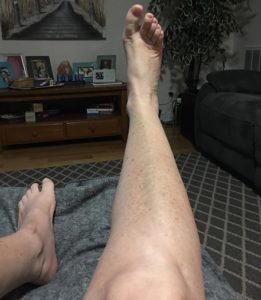
bed and called my daughter to check my BP, knowing it was very low. I encouraged her to check it lying, sitting, and then standing. She couldn’t hear it when I was standing, neither could the PT or visiting RN a few times. I held all BP meds and my daughter notified the nephrologist on call. After great debating, he agreed to stop BP meds and monitor.
As an experienced RN, I was very concerned for my rapid fluid loss and probable electrolyte imbalances. One good hospitalist was very concerned this may happen, but the nephrologist disagreed, telling me “I’m not worried about you peeing too much, I’d like to see that.”
He was that same on call nephrologist that told me I’d be “in the 5% of people recovering WITHOUT prednisone and diuretics.” Well, here I was that five percent of people reversing my kidney failure who, as this nephrologist told me:
You’ll be written up in the medical journals and history books if you reverse your acute kidney injury/failure without prednisone and diuretics.
That is exactly what I did.
Listening to Patients
To date, no doctor has inquired as to how I’ve done this. I wonder why? Perhaps, it may put some out of business? Perhaps the drug companies will be upset? Perhaps many doctors would have to admit they were wrong. Perhaps all of the above. I don’t know the answer, but I plan to make them listen now.
What I did to recover may not work for everyone. I don’t pretend to know everything. As I told each doctor consulting me, “I am respectfully listening to you, all I ask is that you respectfully hear me too.”
This week I was told: We need to listen more to our patients by one of the many doctors caring for me. They did not listen during my battle, maybe they will listen now when I deliver my written story and experiences to each caregiver.
